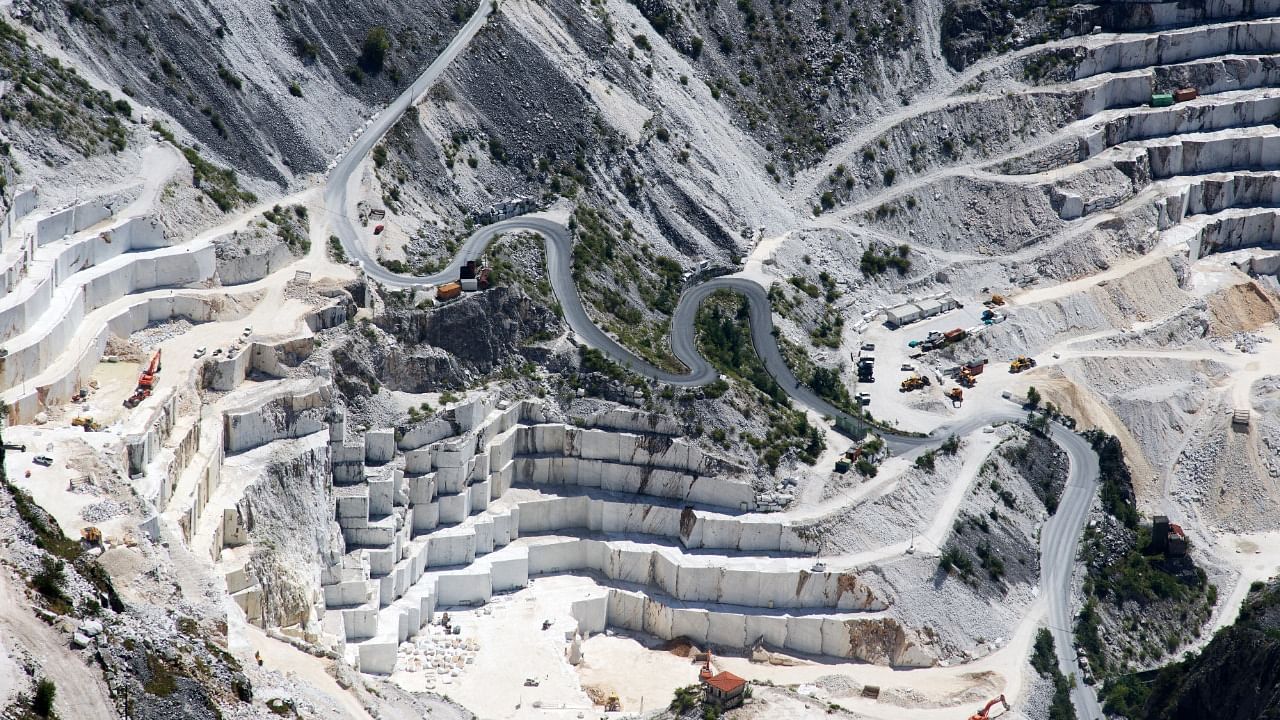
Karnataka is a mineral-rich state and has over 60 varieties of stones. The state, as a result is seeing rampant exploitation of these natural resources.
Granite is one of the oldest occurring rocks and is composed of several minerals, chiefly silica. Biligiriranga Hills (B R Hills) being rich in granite, is lined with a wide range of quarry sites. The granite quarried from here are exported in big blocks.
These quarrying activities are causing harm to the environment as well as people. The by-products or the waste material are discarded in and around the forest and common lands of the villages.
Deforestation is another problem in this region. B R Hills is not barren, but is filled with vegetation. Nearly 30 - 40 biodiverse species cover the rocks, notable ficus and Decalepis hamiltonii.
The roots of D hamiltonii penetrate deep into the rock and help recharge the groundwater.
In the absence of vegetation, the surface temperature of the rocks is seven - eight degrees Celsius higher than average. This increases weathering of the rocks.
Roads are built and labour camps come up in the middle of the forest and the attendant effect on the environment is being felt.
During quarrying, huge quantities of inert dust is released into ambient air which gets dispersed up to 14 km away. This disrupts the formation of rain-bearing clouds and the rainfall; It also causes cloudburst, leading to a downpour of rain and flash floods.
Though the harmful effects of quarrying are well-known, the government have passed an ordinance to liberalise sand mining.
The village panchayats are now authorised to allow sand mining or sand quarrying. The mine owners will bribe village panchayat members. While the village panchayat members get a paltry amount, the exploiters earn several times more.
And the villagers have to bear the brunt.
If a permit is given for five acres, the mine and quarry owners encourage three to four times that amount.
In Ballari, the Tungabhadra water has been diverted for making steel, when there is an absolute scarcity of drinking water in the region. This shows that steel is more important to the government than drinking water.
Also, 3,000 acres are being granted in the district for a steel plant on a 30-year lease. These are things which are affecting the state.
India is a signatory to various environmental agreements, right from the Stockholm Convention, to Rio Convention as well as the Paris Agreement but we have not implemented even 5% of the directives.
The geology department is primarily responsible for all these things. How did they allow all these things to happen? Where is the risk analysis and precautionary principle?
Why action is not taken against defaulting officers? Why is such a massive, visible violation of the earth is going on?
Who is protecting the unauthorised miners? These are the things that people should question their elected representatives.
(As told to Prajwal Suvarna)